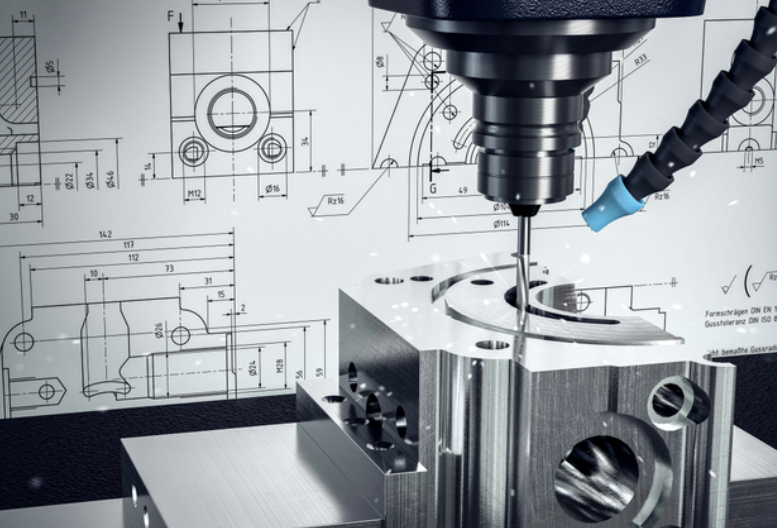CNC machining is a procedure used in most manufacturing operations and is widely used in most industries. CNC stands for Computer Numerical Control and deals with the use of one or more computers to manage the operations of different machine tools such as lathes, routers, and milling machines.
5-axis CNC machining is an absolutely excellent CNC machining for producing parts and final products from a wide variety of materials such as plastics and metals.
However, when it comes to specific 5-axis CNC machining, most people’s first impression is: high technology, expensive, and difficult to operate, but is 5-axis machining really like this? The following paragraphs will introduce you to 5-axis CNC machining in 3 important aspects.
What is 5-axis machining
This is a procedure that involves using a CNC to move a cutting device or different parts in five different axes at the same time. This makes room for producing very complex parts, which is why 5-axis CNC milling is very common in aerospace operations. One of the biggest contributors to the use of 5-axis CNC machines is the need to increase proficiency and reduce the production time required from the start of the actual process to completion.
The ability to avoid collisions with parts of stationary equipment by rotating the table or cutting tool to provide space for rapid access to part geometry is another contributing factor. Finally, improve equipment life or life by rotating the table or cutting equipment to maintain optimal cutting position and consistent chip loading.
1.1 “5” for 5-axis machining
Five-axis machining is a method of CNC machining. The machining center we usually use is a three-axis machining center. The 3-axis refers to the X-axis, Y-axis, and Z-axis of the machining center. The five-axis machining center is to add two rotary axes to the three common linear axes of X, Y, and Z, which are also called the fourth axis and the fifth axis. Two of the three axes A, B, and C have different movement modes in the vertical machine to meet the technical needs of various products.
1.2 Five main forms of five-axis machine
There are many types of five-axis machine tools in horizontal machining centers, mainly in the following five forms: First, the double rotary head form, two rotating coordinates directly control the direction of the tool axis; 2, the drooping rotary head form, the two coordinate axes are at the top of the tool , but the rotation axis is not perpendicular to the linear axis; the third is the double turntable form, the two rotating coordinates directly control the space rotation; One swing and one turn, two rotation coordinates, one on the tool and one on the workpiece.
1.3 Types of five-axis CNC machine tools
There are several operations that allow a 5-axis CNC machine to save you a lot of time and enhance your current programs. These machines come in a variety of types to meet the demands of the growing manufacturing industry. A unique difference to a 5-axis CNC machine is the arrangement of the rotary axes. They are divided into three different types including header/header, table/table and table/header.
a. head/head
The rotary axis of this type of CNC machine is located at the head. They are made from 5-axis vertices that sit on a specific platform and are moved by a fixed table that keeps the workpiece in place. So you don’t need to worry about the tool interference of the machine tool spindle head. This gives the vertices a chance to move around a specific part, making 5-axis CNC machines the best choice for producing large parts. Due to their design, they typically have limited motion in rotational axes and tilts.
b. Table/Header
In this type of machine setup, one axis of rotation is located in the turntable and the other in the machine head. The axis of rotation is located in the head and has a limited range, while the axis of rotation is located in the table and has an unlimited range. Since the parts are placed on a rotating axis, this arrangement is limited by the number of items it can produce. One way this type of setup is slightly advantageous over the head/head type is its ability to consistently rotate parts without worrying about hitting certain limits.
c. Table/Table
Here, all the axes of rotation of the machine are located within the table, and the range of the axes of rotation is also limited. Its rotation axis range is not limited. This type of machine arrangement has the smallest working envelope compared to other types. Others come with explicit motors that make them work fast.
1.4 Five-axis machining ≠ five-sided machining
5-axis machining is very different from 5-sided machining. Many people don’t know this and mistake 5-sided machining for 5-axis machining. 5-axis machining has 5 axes of x, y, z, a and b axis (or c). The x, y, z and a, b axes (or c) form 5-axis simultaneous machining. It is suitable for hook surface processing, special-shaped processing, hollow processing, punching, oblique hole, and bevel cutting. 5-sided machining is similar to 3-axis machining. Only five faces can be processed, and special processing, oblique holes, and bevel cutting cannot be done.

